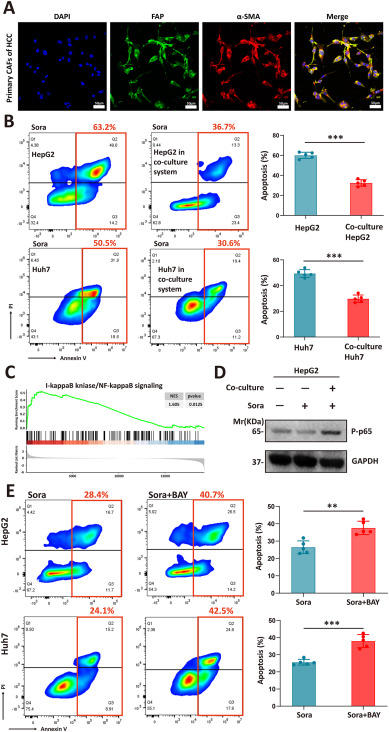
Cancer-associated fibroblasts derived fibronectin extra domain A promotes sorafenib resistance in hepatocellular carcinoma cells by activating SHMT1


Resistance to sorafenib, an effective first-line treatment for advanced hepatocellular carcinoma (HCC), greatly compromised the prognosis of patients. The extracellular matrix is one of the most abundant components of the tumor microenvironment. Beyond acting as a physical barrier, it remains unclear whether cell interactions and signal transduction mediated by the extracellular matrix contribute to sorafenib resistance. With the analysis of primary HCC organoid RNA-seq data combined with in vivo and in vitro experiments validation, we discovered that fibronectin extra domain A (FN-EDA) derived from cancer-associated fibroblasts played a critical role in sorafenib resistance. Mechanistically, FN-EDA stimulates the up-regulation of the key one-carbon metabolism enzyme SHMT1 in HCC cells via the TLR4/NF-κB signaling pathway, thereby countering the oxidative stress induced by sorafenib. Moreover, we reinforced the clinical significance of our discoveries by conducting in vivo assays with an immunodeficiency subcutaneous xenograft tumor model, which was established using primary cancer-associated fibroblasts derived from clinical HCC tissues, and through the analysis of HCC samples obtained from The Cancer Genome Atlas (TCGA) database. Our findings suggest that targeting the FN-EDA/SHMT1 pathway could be a potential strategy to improve sorafenib responsiveness in HCC patients.
